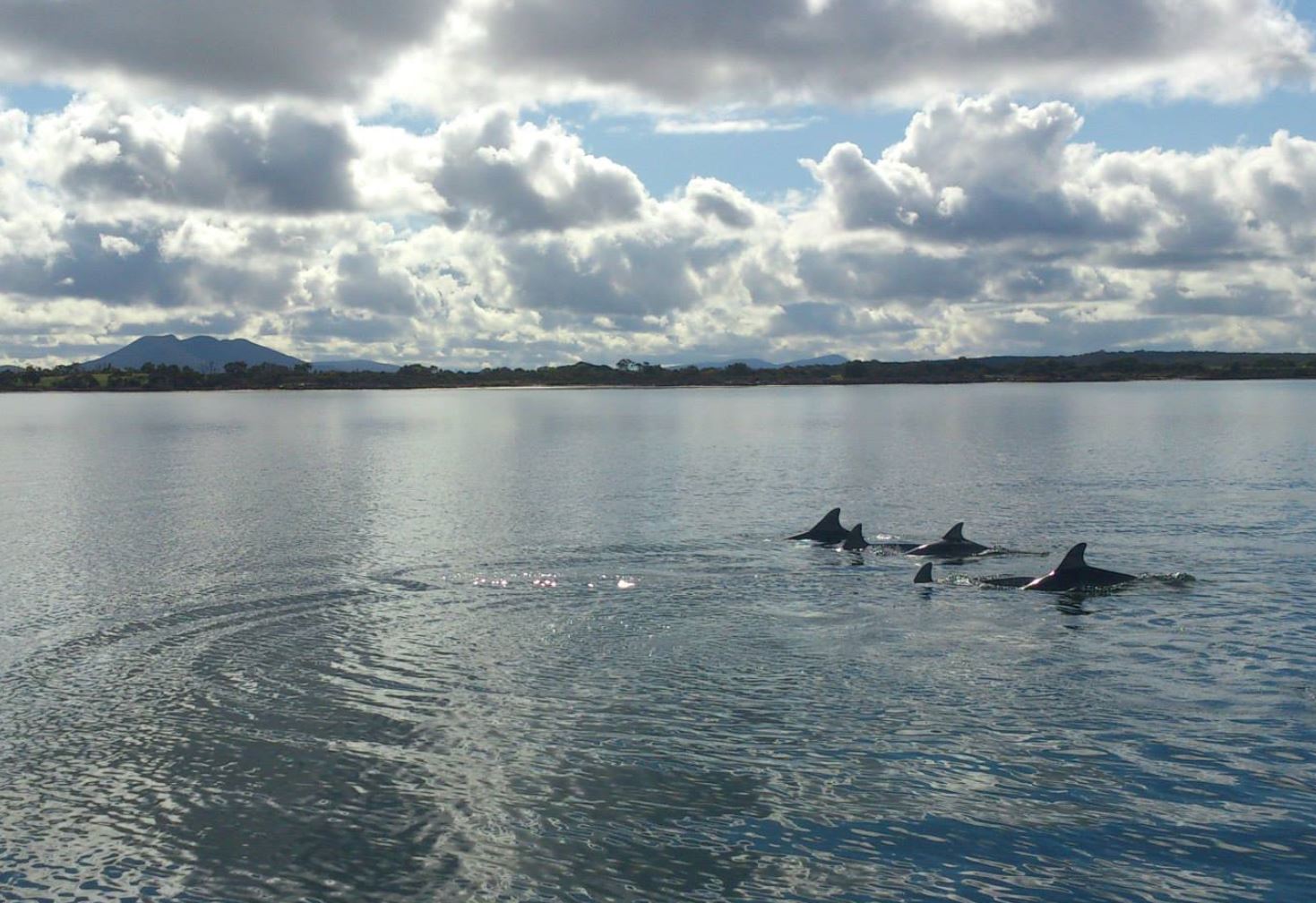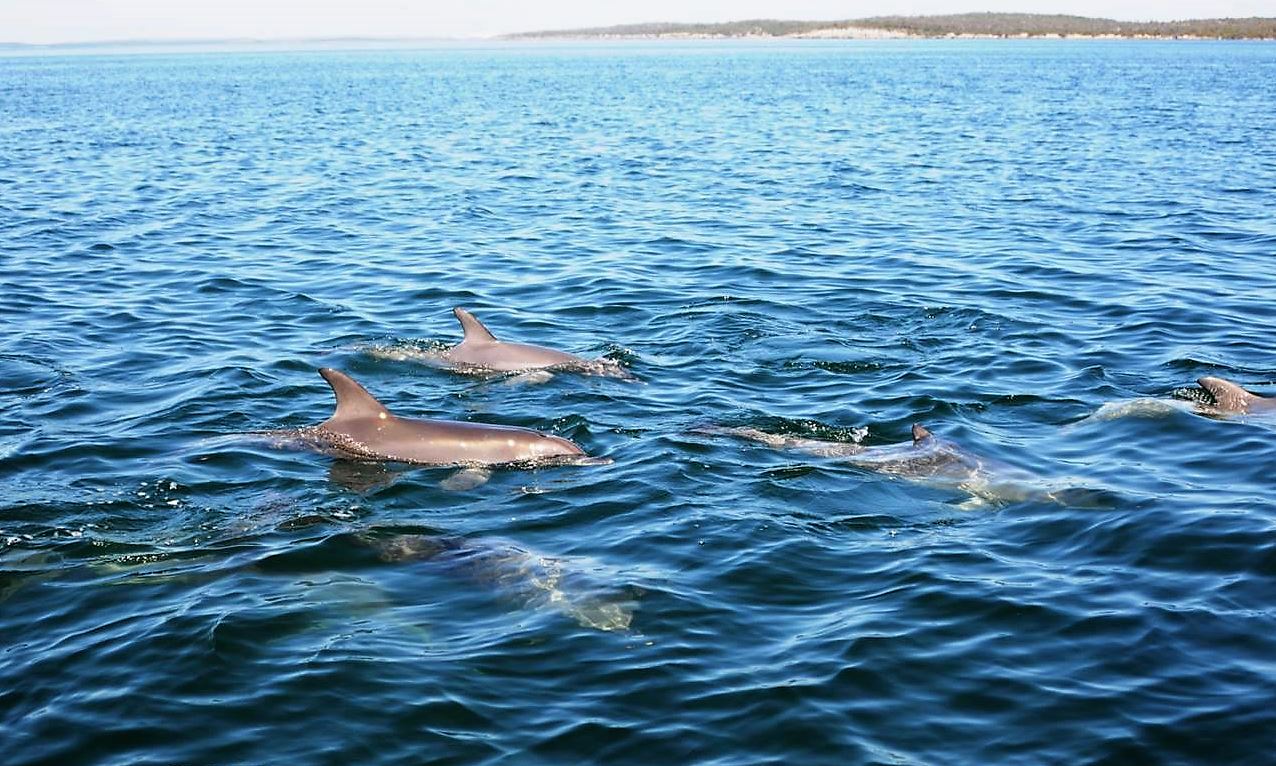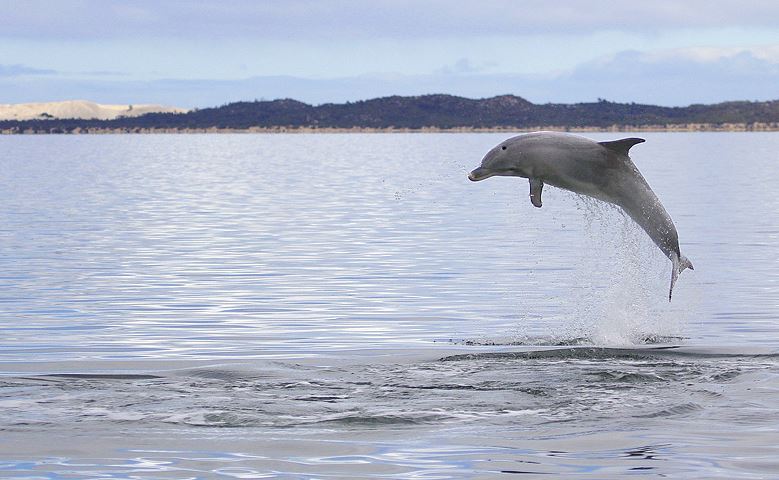
The Coffin Bay dolphins off South Australia’s Eyre Peninsula mainly live in the shallow waters close to the coast and oyster farms – and outside the declared conservation sanctuary zones.
While that’s good for the locals and tourists who enjoy the area’s wildlife and picturesque location, it can be harmful for the dolphin population exposed to a range of human threats, researchers at Flinders warn in a new Scientific Reports paper.
They say the new research will help to better inform future zoning for marine protected areas around South Australia.
The extended study of the spatial distribution of southern Australian bottlenose dolphins (Tursiops cf australis) in Coffin Bay – part of the State Government-declared Thorny Passage Marine Park – found the social animals regularly frequent more shallow waters (2-10 metres deep) generally outside sanctuary boundaries.
Flinders University researcher Cecilia Passadore found the majority of dolphins base their activities within 1000m of the shore and about 2500m from oyster farms.
“In contrast, the zoning arrangements of the marine park were established with little information on the ecology or distribution of the important top predators, such as dolphins, which are vital to a healthy ecosystem,” says Ms Passadore, from the Cetacean Ecology, Behaviour and Evolution Lab (CEBEL) at the College of Science and Engineering at Flinders University.
Flinders University senior lecturer Dr Guido J. Parra, a senior author on the study, says the CEBEL studies are filling in gaps in the ecology of SA dolphins and providing methodological approaches applicable to other areas.

“In South Australia, we know that climate change, coastal pollution, increasing coastal zone development, aquaculture and fisheries interaction, boating and other factors are threats to the viability of dolphin populations,” says CEBEL director Dr Parra.
“We hope our research at Flinders University – including on dolphins in metropolitan waters close to Adelaide – will help to inform SA marine park zoning, which is due for its 10-year review in 2022, and other important conservation and habitat protection measures.”
Australia has the world’s largest representative network of marine parks covering 3.3m km2 (36%) of its marine environment.
Despite this protection, few studies have focused on investigating whether Australia’s marine protected areas are adequately protecting marine mammals which may be as risk of local extinction.
The paper, ‘Modelling Dolphin Distribution to Inform Future Spatial Conservation Decisions in a Marine Protected Area, 2018, by C Passadore, LM Möller, F Diaz-Aguirre, and GJ Parra, was published in the Scientific Reports (Nature Publishing), Vol 15, 10, October 2018.
Funding for this project was provided by Flinders University, Lirabenda Endowment Fund of the Field Naturalists Society of South Australia, Nature Foundation SA Inc., and Holsworth Wildlife Research Endowment (ANZ and Equity Trustees). C. Passadore had an Australian Development Scholarship by the Australian Agency for International Development (AusAID).
Also see ‘Social cohesion and intra-population community structure in southern Australian bottlenose dolphins (Tursiops sp.)” 2018 by N Zanardo, GJ Parra, F Diaz-Aguirre, EAL Pratt and LM Möller published in Behavioral Ecology and Sociobiology (Springer).


